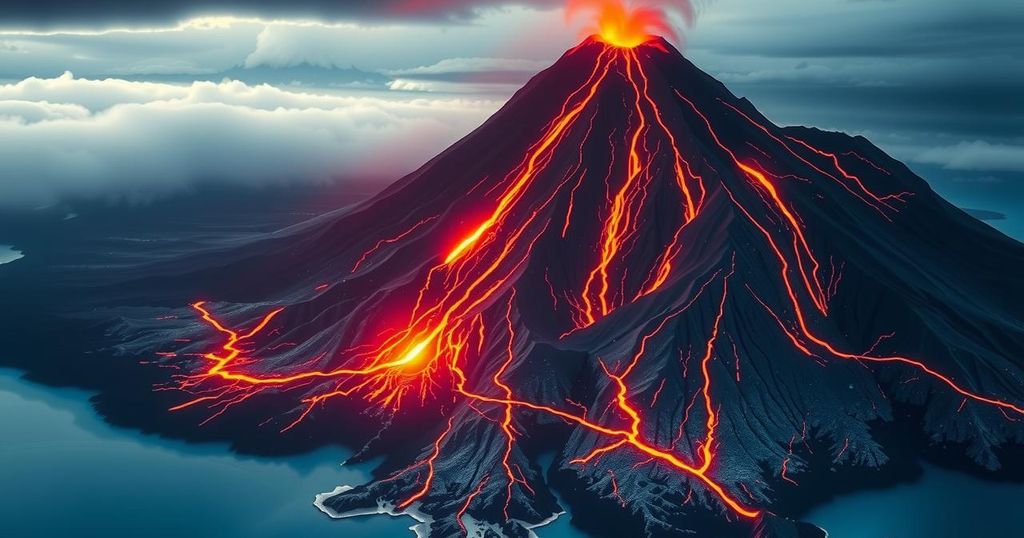The Impending Threat of Massive Volcanic Eruptions: Are We Prepared?

Scientists caution that a significant volcanic eruption could occur within this century, posing unprecedented challenges due to climate change and population density. The catastrophic effects of past eruptions, particularly the Mount Tambora eruption in 1815, highlight the potential for global cooling, disrupted agriculture, and associated humanitarian crises. Urgent preparation and scenario planning are deemed essential to mitigate the impact of future eruptions.
The imminent threat of a massive volcanic eruption poses significant risks to a world that remains ill-prepared. Mount Tambora’s eruption in 1815 serves as a stark reminder of the potential global turmoil instigated by such natural disasters, resulting in a year without a summer, widespread famine, and disease outbreaks. Present-day scientists, noting that geological data estimates a 1-in-6 chance of a substantial eruption within this century, emphasize the unprecedented consequences as humanity faces climate change and increased population density.
A large-scale volcanic event would release sulfur dioxide into the stratosphere, creating cooling aerosol particles that could disrupt climate patterns and agricultural productivity. This climatic disturbance, in a warmer world, risks exacerbating existing agricultural vulnerabilities, particularly affecting crucial breadbasket regions globally.
Moreover, the potential exacerbation of catastrophic events due to climate change — such as extreme weather and oceanic temperature stratification — complicates predictions of volcanic activity and its consequences. Experts advocate for proactive measures, including scenario assessments and emergency preparedness strategies, to mitigate impact in the event of a significant eruption. With the threat of future eruptions looming, it becomes imperative to maintain vigilance and improve readiness against possible chaos that could ensue.
Historically, volcanic eruptions have dramatically altered global climates, as evidenced by the eruption of Mount Tambora in 1815, which substantially cooled temperatures and led to severe agricultural and social ramifications. Such eruptions are found to have cooling effects due to the sulfur dioxide released into the atmosphere, which forms reflective aerosol particles that persist in the atmosphere. The global implications of a massive eruption today would be compounded by existing climate challenges and a burgeoning population, resulting in unforeseen consequences and crises that require strategic preparation.
The potential for a massive volcanic eruption within this century demands urgent attention from the scientific community and policymakers. Historical data reveals the detrimental effects of previous eruptions on global climates and food security. With recent scientific assessments indicating increasing geological activity linked to climate change, it is vital to formulate strategic plans to mitigate risks and enhance global preparedness in the face of such natural disasters. Ignoring this probability could lead to catastrophic human and economic losses in a world already grappling with climate change.
Original Source: www.cnn.com







